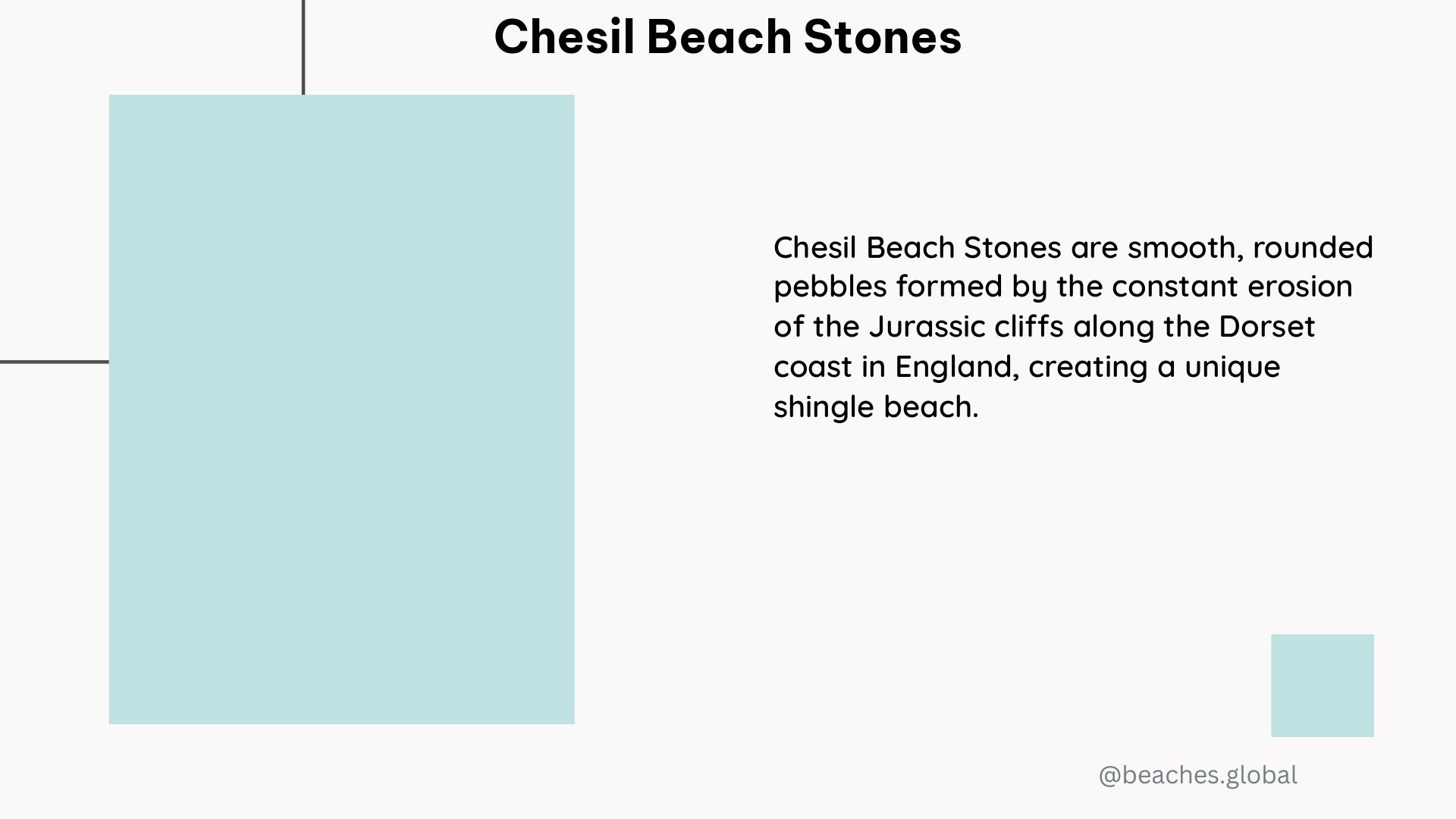Chesil Beach, located in Dorset, England, is a remarkable geological feature known for its 18-mile long tombolo of flint and chert pebbles. These pebbles, formed over thousands of years, are a true wonder of nature and a must-visit destination for beach enthusiasts.
The Composition of Chesil Beach Stones
The Chesil Beach stones are primarily composed of highly resistant minerals, such as quartz and chalcedony, with a hardness of 6 on Moh’s Scale. The dominant materials are flint and chert, which have been derived from Cretaceous rocks in the surrounding area. These stones are constantly on the move, thanks to the powerful forces of longshore drift.
Pebble Size Variation along Chesil Beach

One of the most fascinating aspects of Chesil Beach is the gradual increase in pebble size from west to east. At the western end, near West Bay, the pebbles are pea-sized, while at the eastern end, near Portland, the largest pebbles can be as big as potatoes. This size variation is a result of the waves and wind continuously moving the pebbles along the beach, with the smaller ones being transported further than the larger ones.
| Location | Pebble Size |
|---|---|
| West Bay | Pea-sized |
| Middle of Chesil Beach | Larger than pea-sized |
| Portland | Potato-sized |
Provenance and Rare Constituents of Chesil Beach Stones
The Chesil Beach stones are not only visually striking but also provide valuable information about their geological origins. By analyzing the composition of the pebbles, scientists can trace them back to their source rocks. For example, the Budleigh Salterton (Bunter) quartzites are easily recognizable and serve as important indicators of provenance.
In addition to the dominant flint and chert, the beach also contains rare constituents, such as jasper, which originates from volcanic rocks, and Devonian “madrepores,” which are fossilized corals or stromatoporoids.
Peat Boulders and Beaver Bones
Another unique feature of Chesil Beach is the presence of peat boulders, which have been eroded from peat beds beneath the beach by the powerful waves during storms. These peat blocks are much larger than the typical peat fragments found at the Portland end of the beach, and they have been found to contain the bones of beavers, indicating that these animals were once common inhabitants of the nearby Fleet Lagoon.
Conservation and Preservation of Chesil Beach Stones
The Chesil Beach stones are a precious and essentially non-renewable resource. In the past, the removal of pebbles for commercial purposes was a common practice, but this has now been strictly prohibited. Casual removal of pebbles by individuals is also discouraged to ensure the long-term survival of this unique geological feature.
Conclusion
Chesil Beach is a true gem of the Dorset coastline, offering a captivating and ever-changing display of pebbles that have been shaped by the forces of nature over thousands of years. Whether you’re a geology enthusiast, a beach lover, or simply someone who appreciates the beauty of the natural world, a visit to Chesil Beach is sure to leave a lasting impression.
References:
- The Real Jurassic Park: Geological Explorations in Southwest England, University of Washington, Tacoma
- Chesil Beach Pebbles, Dorset – Geology Field Guide, Ian West
- Why Chesil beach is a pebble nicker’s paradise – The Guardian
- Pebbles – Chesil Beach, Chesil Beach Pebbles from Chesil Cove, Portland – Jessica’s Nature Blog
